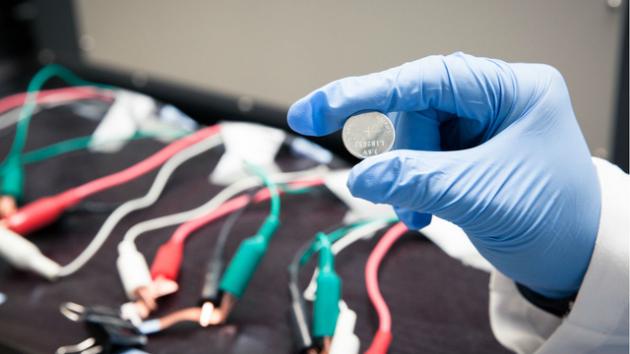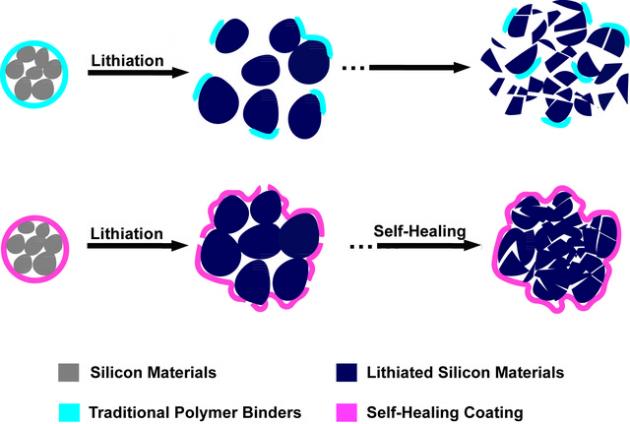The Rechargeable Batteries of Tomorrow Will Self Repair Itself
2013.11.18

Lithium-ion batteries aren't the most efficient. Thee more discharge cycles you put them through, the less efficient the negative electrode becomes.
To make better batteries, researchers at Stanford University have developed a battery that heals itself. They have been working to increase the energy density of modern lithium-ion batteries while reducing their weight for a number of years.
One of the most promising advances is incorporating silicon into the cathode, allowing it to hold more electrons than the current oxide mix. But silicon swells up to 300 percent, and when filled with electrons, they shrink back down as they're expended which leads the material to crack and splinter within a few discharge cycles.
The researchers at Stanford developed a self healing polymer that doesn't stop cracking, but instead repairs itself. Developed by Stanford's Chao Wang and Hui Wu from Beijing's Tsinghua university, the team deliberately weaked a few key bonds within the polymer so that those weakened bonds would break easily. They then chemically attracted back towards one another, repairing itself as soon as they're snapped apart.

"We found that silicon electrodes lasted 10 times longer when coated with the self-healing polymer, which repaired any cracks within just a few hours," Stanford Professor Zhenan Bao said in a press statement.
"Self-healing is very important for the survival and long lifetimes of animals and plants," said Wang in the Nov. 19 issue of Nature Chemistry. "We want to incorporate this feature into lithium ion batteries so they will have a long lifetime as well." The electrodes currently only work for about 100 charge cycles without failing.
Could the future of batteries be the sort that never run out?
More Articles
Copyright © Fooyoh.com All rights reserved.